
 |
start - tips - pictures - signal flow - presets - repair dead keys | apps: patch editor - sysx analyzer | midi: sysx structure - cc messages - BCF2000
How to?
I still use Cakewalk on a Windows 98 PC. It turned out to be the only hardware/software configuration, that could synchronize correctly to the MIDI OUT sync from the TR-727. That's why these screenshots look so archaic. But they're not. They are from march 2014.
Step-by-step guide for Cakewalk and Sonar
In the Cakewalk "WINCAKE.INI" file, create a "Patch request" string for the SIEL DK70 in the [Dump Request Macros] section:

See How to make the Cakewalk/Sonar settings about how to do this correctly.
Connect the SIEL to the PC and on the SIEL Panel, make sure the MIDI "INT" and "EXT" leds are on.

Start Cakewalk and open the View > Sysx screen
Select a Bank number and click the Receive button. The "Receive System Exclusive" screen opens:
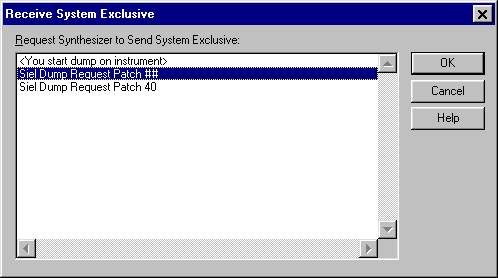
Select the line containing the ## and click OK
Type in the (decimal) number of the patch you would like to request from the DK70.
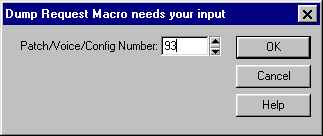
Hit OK, the SIEL starts to send the patch to Cakewalk.

The DK70 is finished when the screen says "50 bytes received". Click Done.
When you double-click the line in the Bank screen, you see the results of the dump:
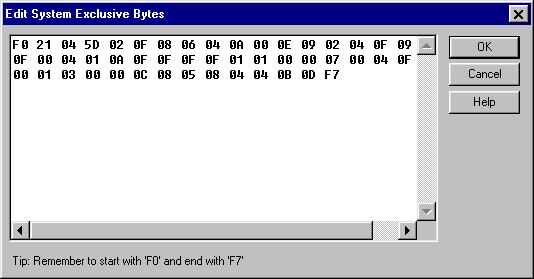
Don't change anything, hit Cancel and click the Save Bank button. The dump will be saved as a "syx" file.

Upload this file using the app on this website and hit "Upload + Convert".
The app will analyse the sysx file and show you the parameter settings for this sound.
The app also knows the Patch number, because that number is encoded in the sysx file.
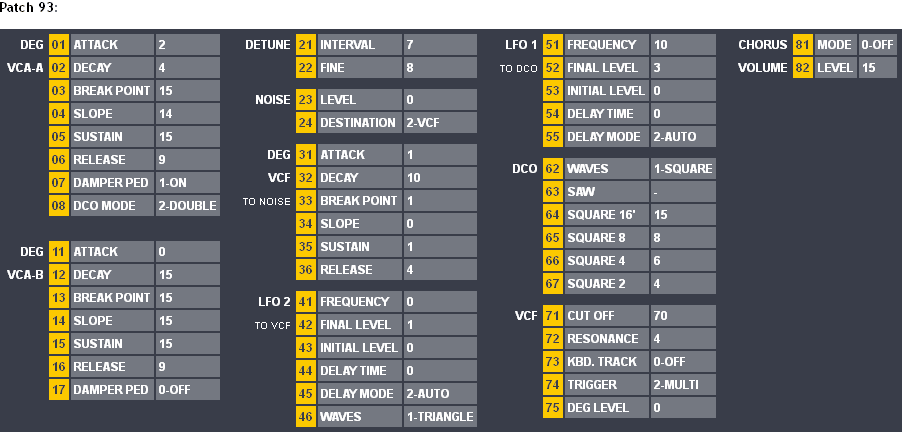
Now you can hit the "Convert to MIDI CC" button.
The app will convert the sysx data to MIDI cc-messages and write them in a file you can download. By the way, the "Chorus" setting is ignored in the conversion.
Save the MID-file to your harddisk.

Open the MID-file in Cakewalk.
In Cakewalk, right click on the Track and select "Event List".
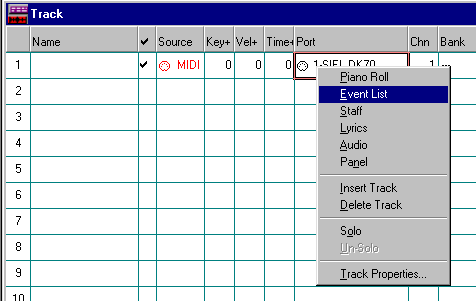
This will show the same parameters, but now as CC messages
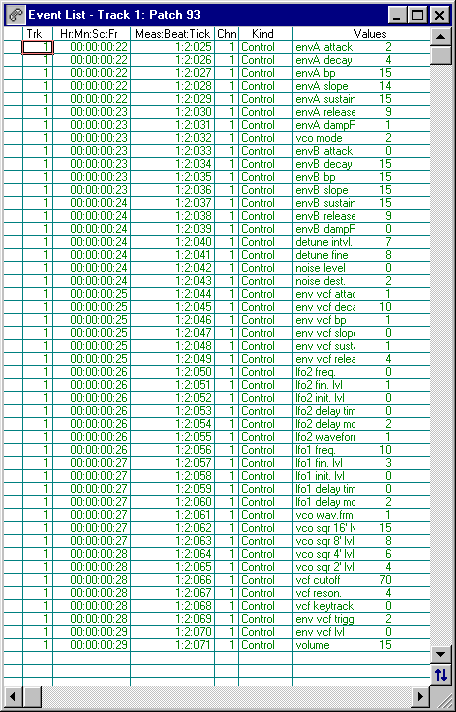
You can hit "Play" in Cakewalk, so the CC data is sent to the SIEL DK70 and your patch is recreated.
The DK70 puts the sound in the Edit Buffer. You can WRITE the patch to the User Memory (number 40 to 49).
The reason the Event List shows the Controller Names in stead of the controller numbers, is because I assigned the controller names in the "Define Instruments and Names" screen.
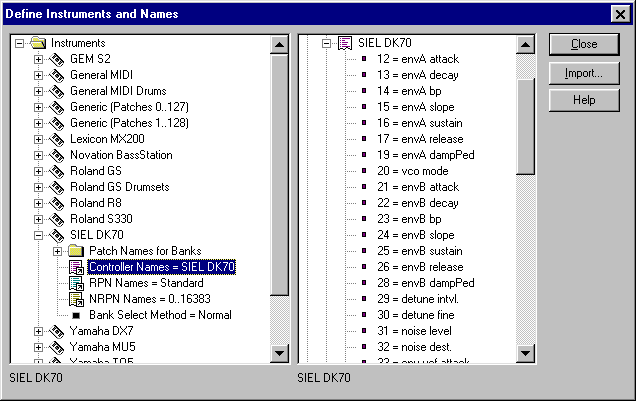
As a bonus:
When you use the Behringer BCF2000 control surface settings for the SIEL DK70 I created, I made the Behringer send all the CC data on MIDI Channel 1. Set the SIEL DK70 MIDI receive Channel to 1 (parameter 94).
Now if you open the MID-file in your sequencer software, and play the CC-data on Channel 1, the SIEL DK70 and the Behringer BCF2000 jump to the right settings, which is a lot of fun watching the motorized faders move to the correct settings. Also it makes editing a breeze.
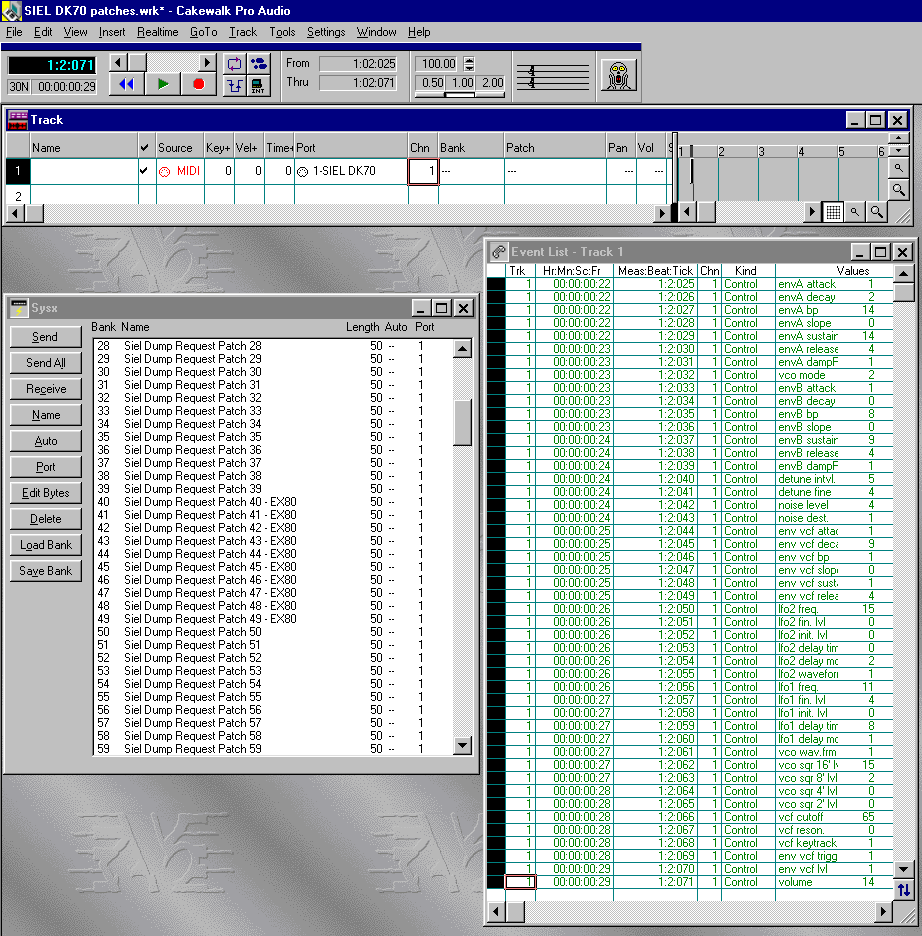
and the Behringer - HOP:
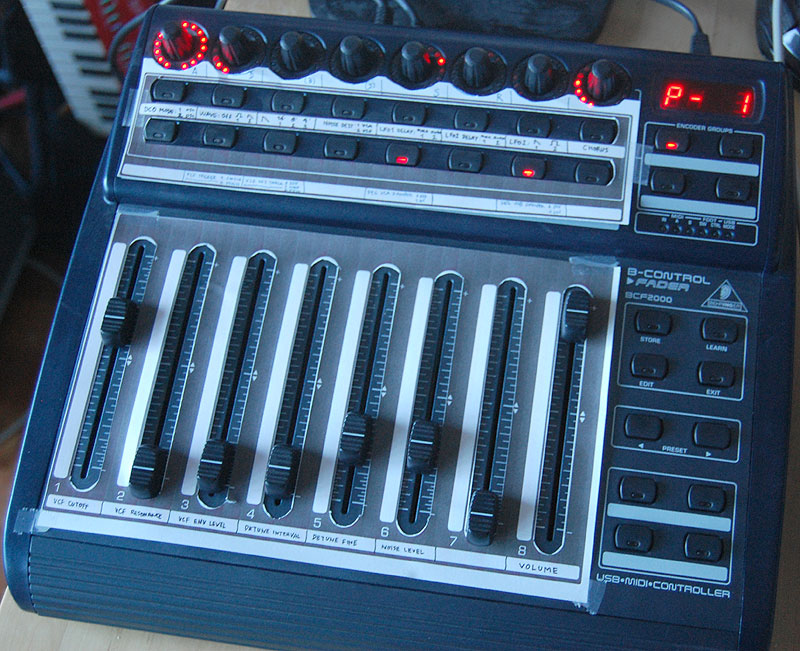
How cool is that!